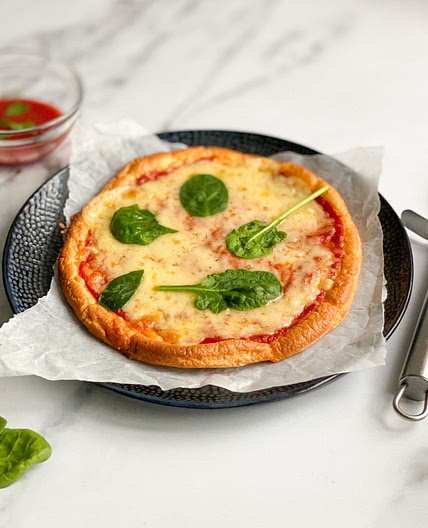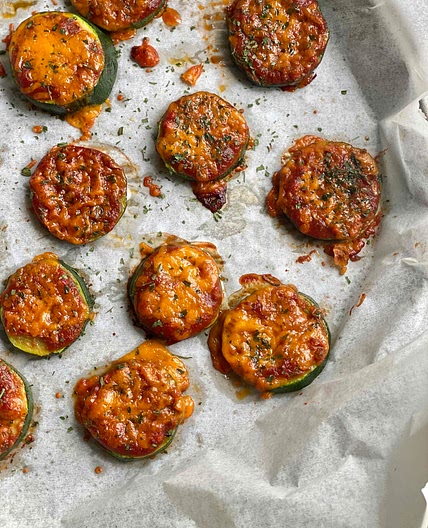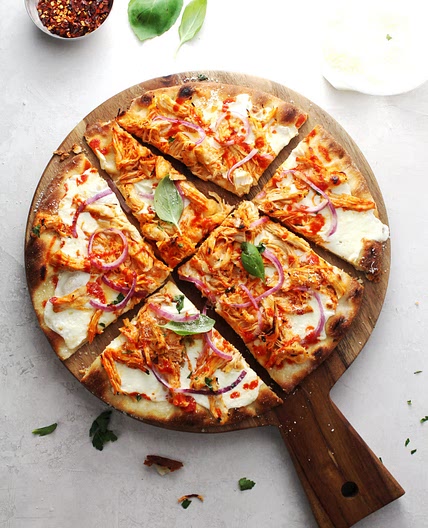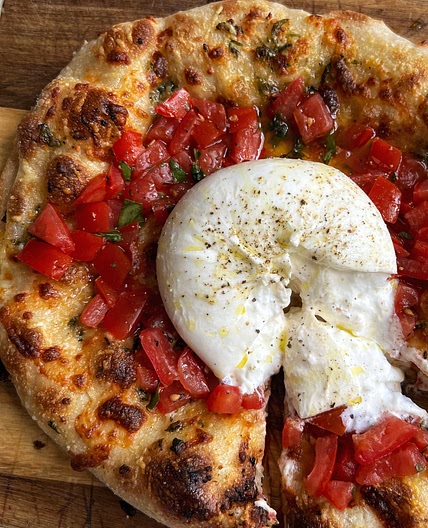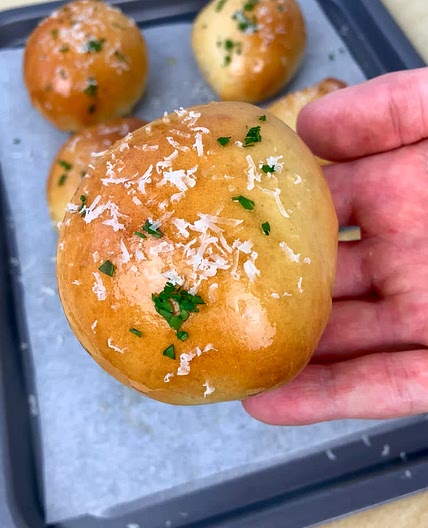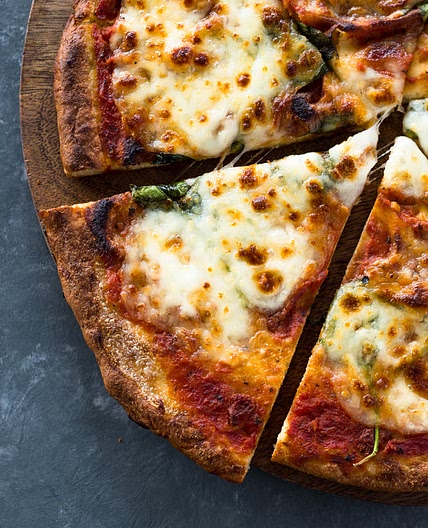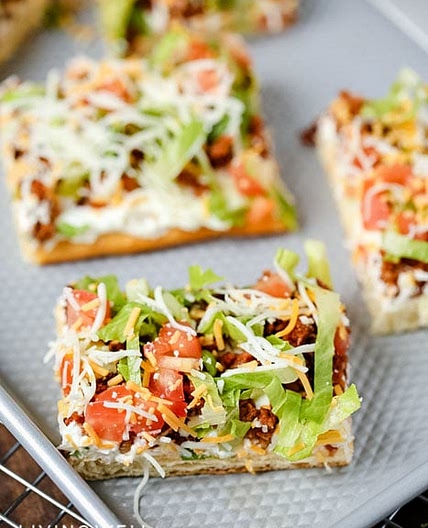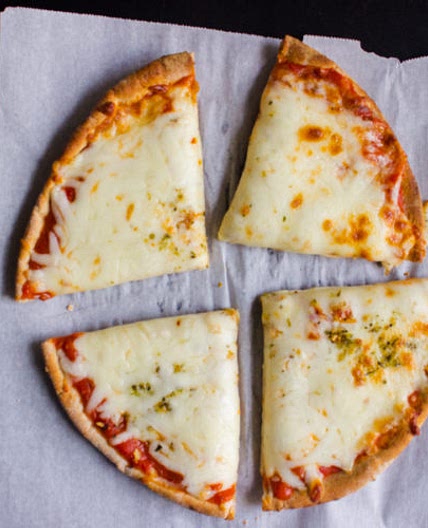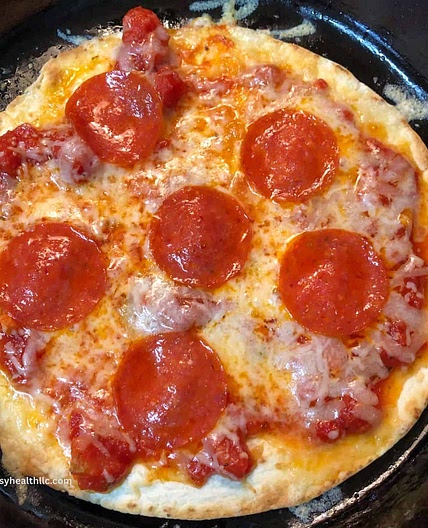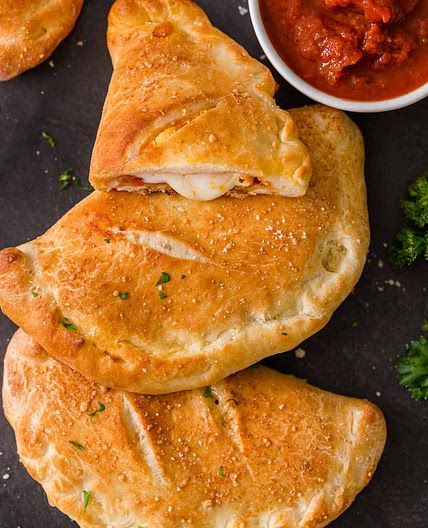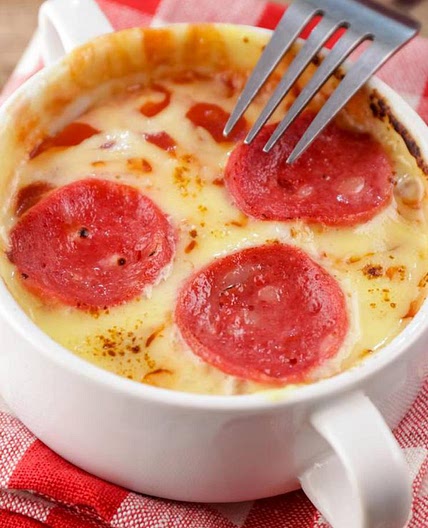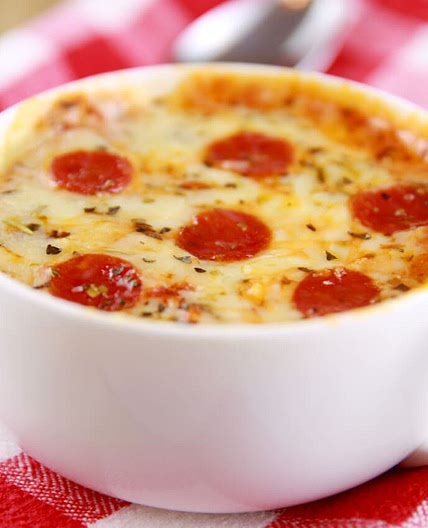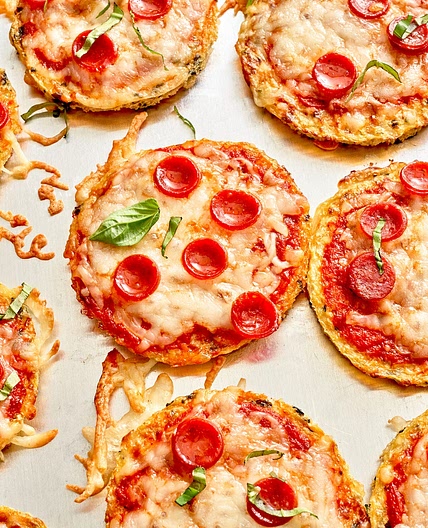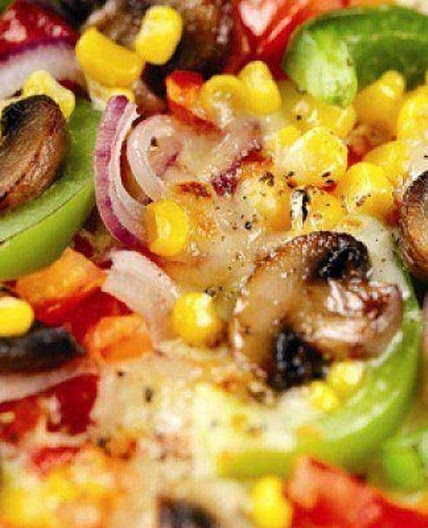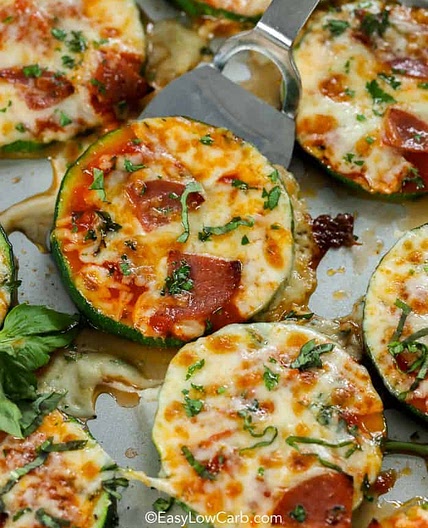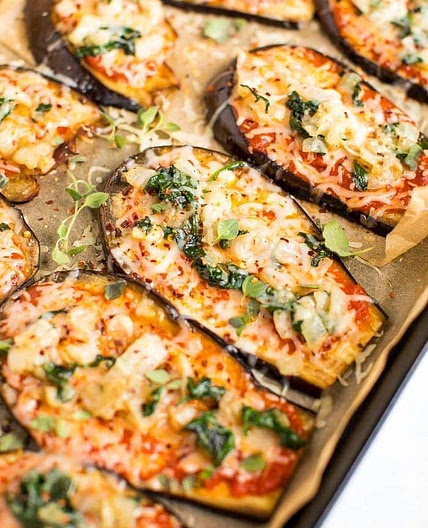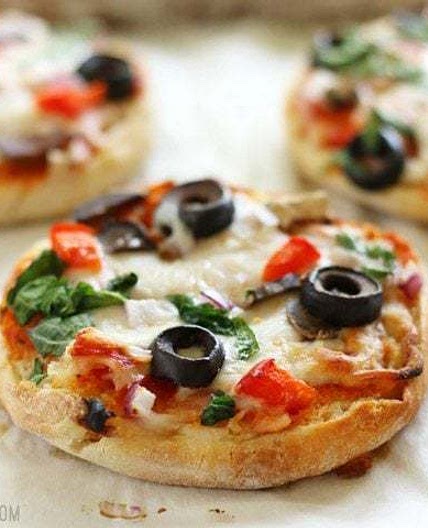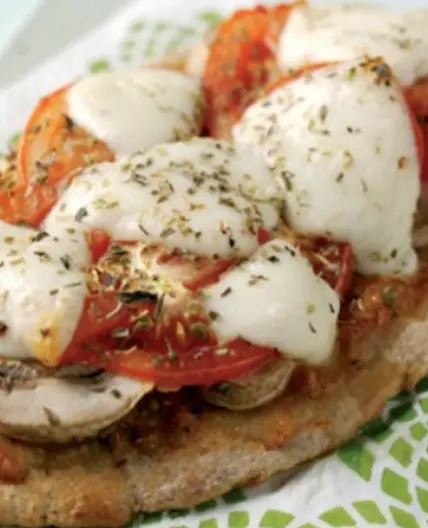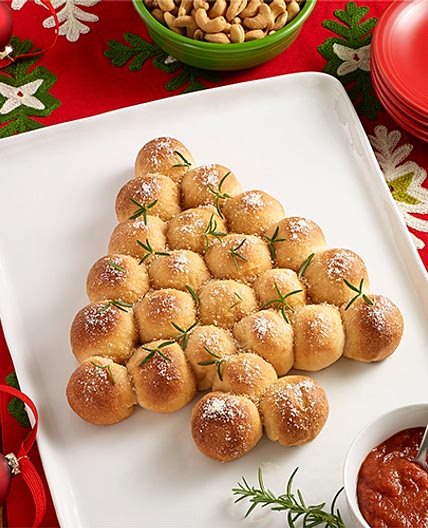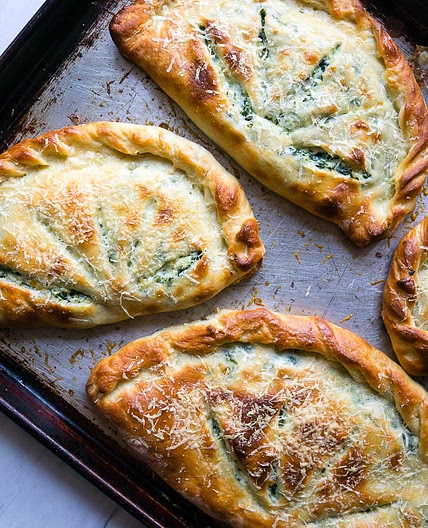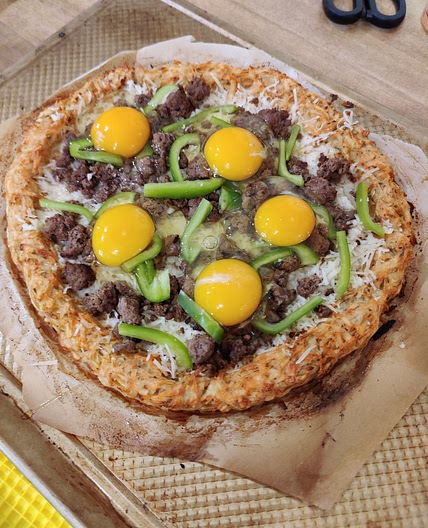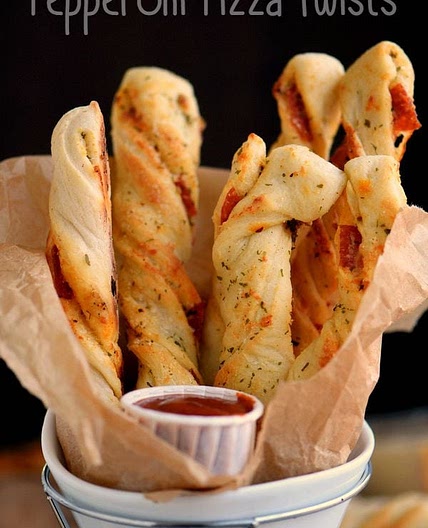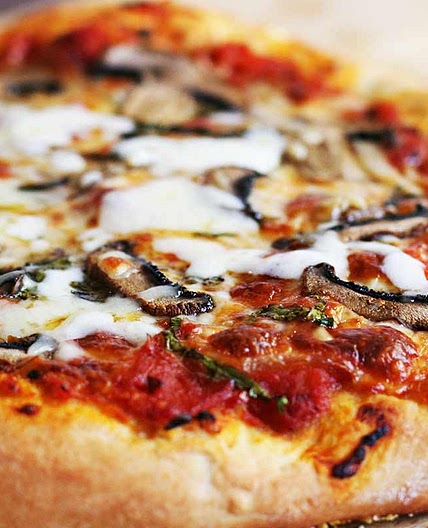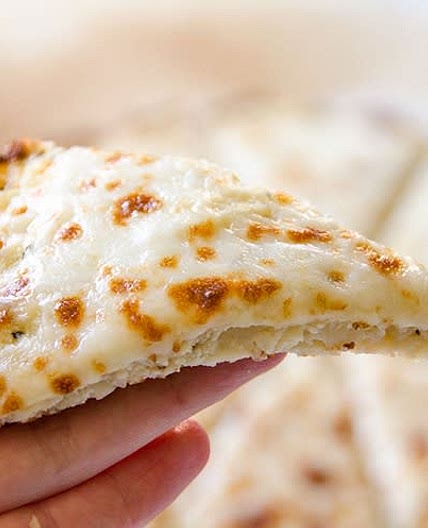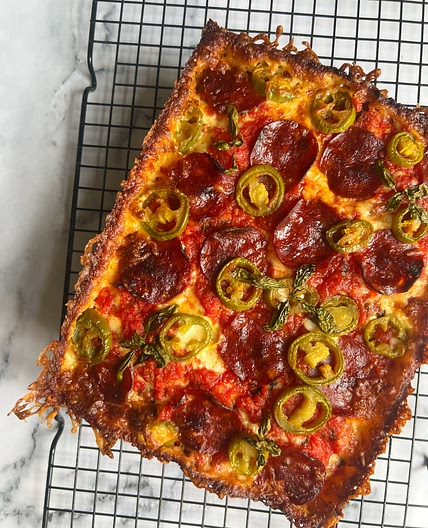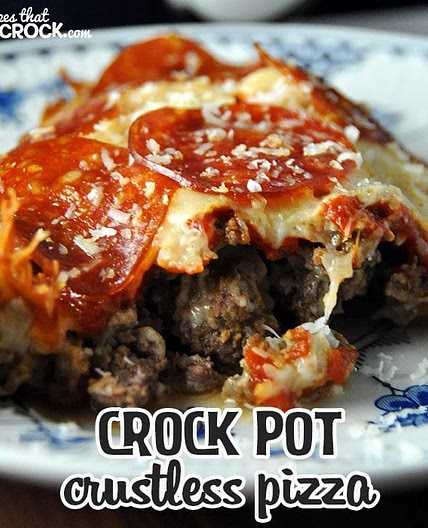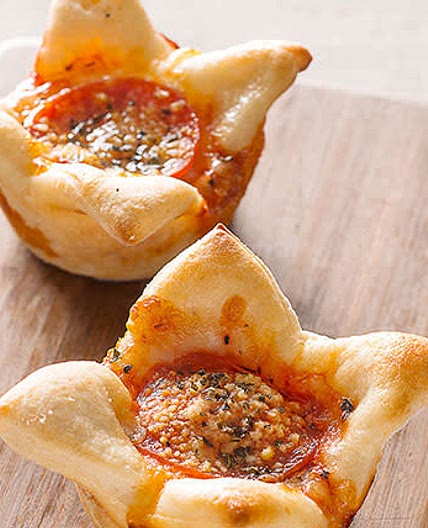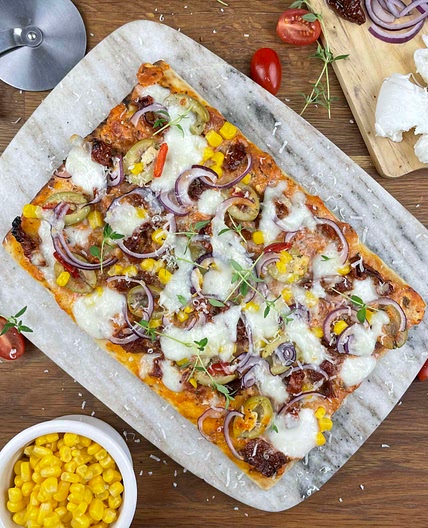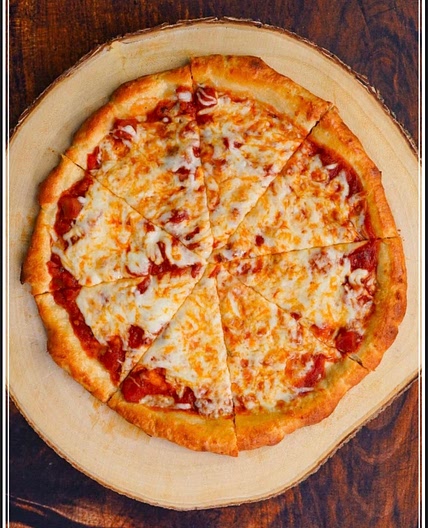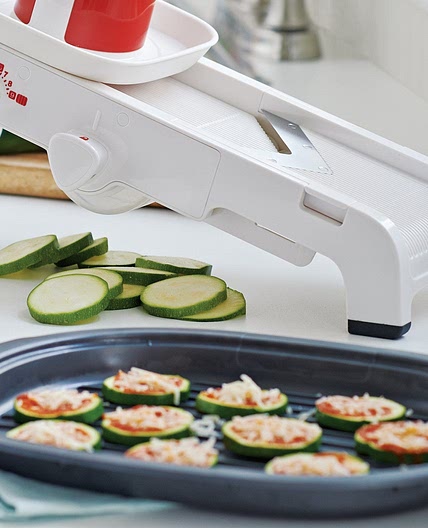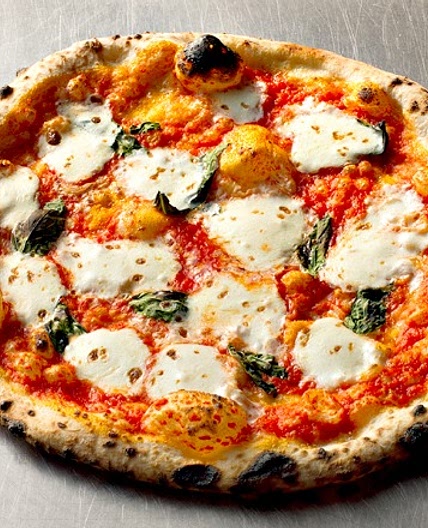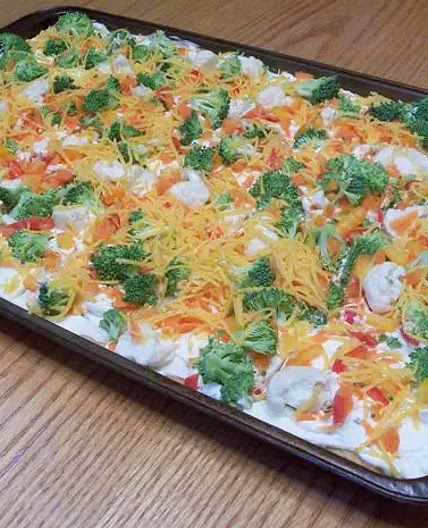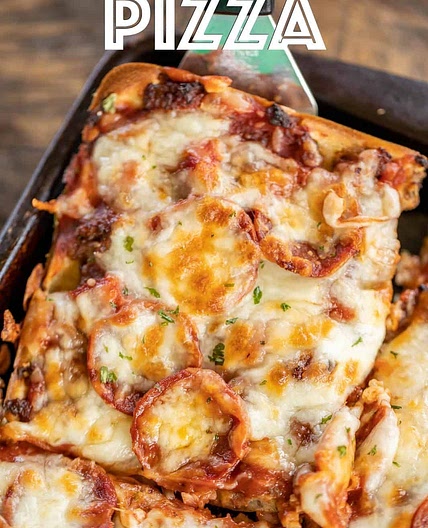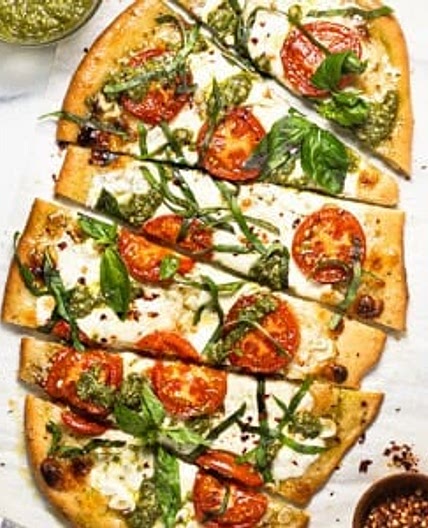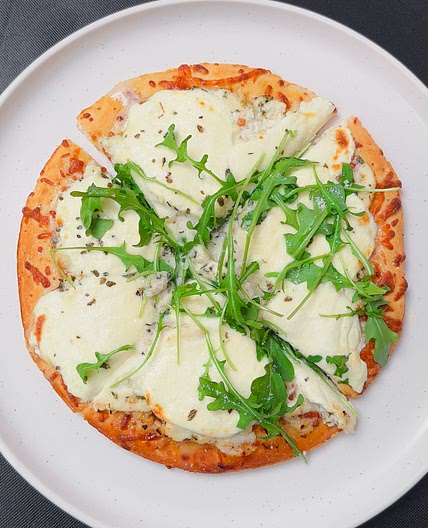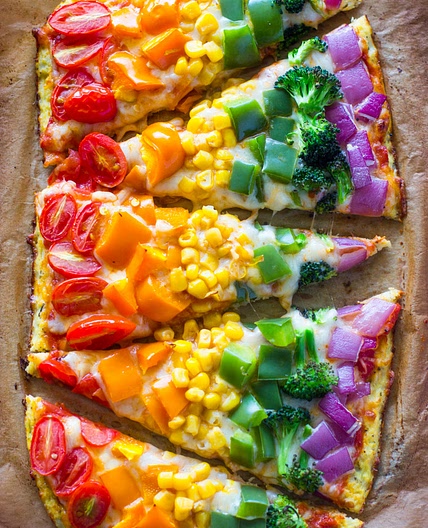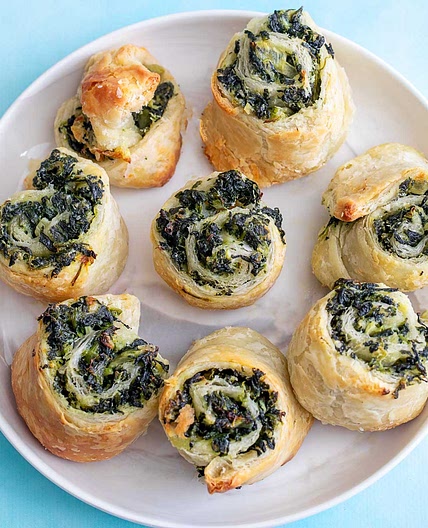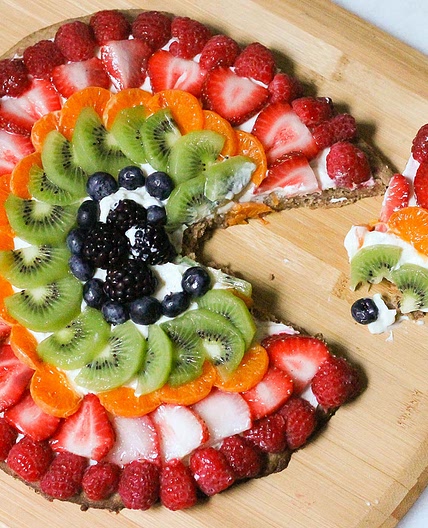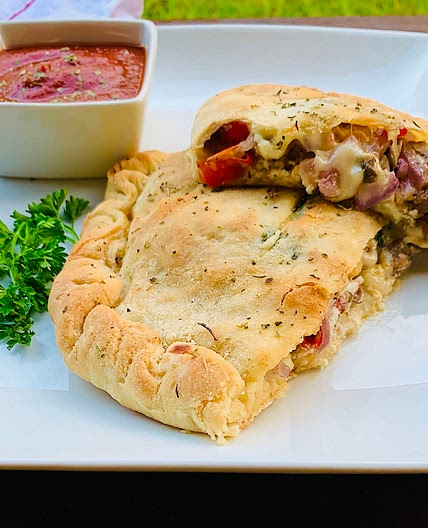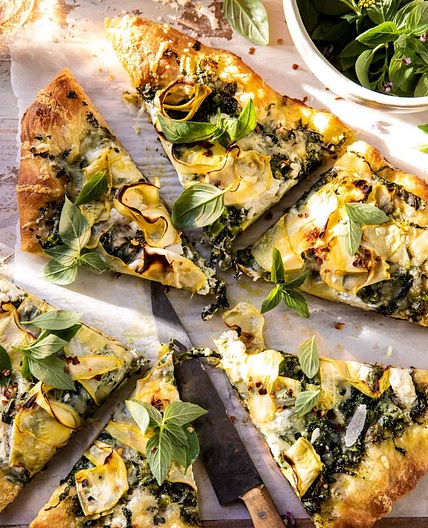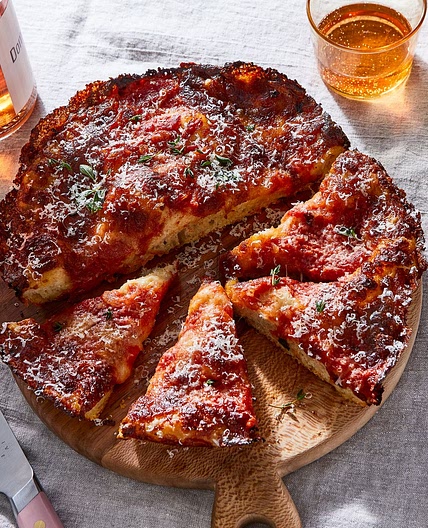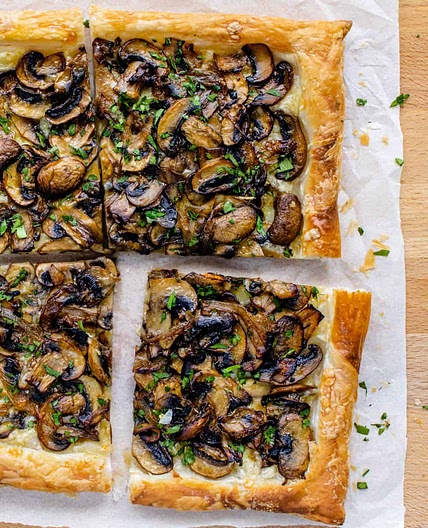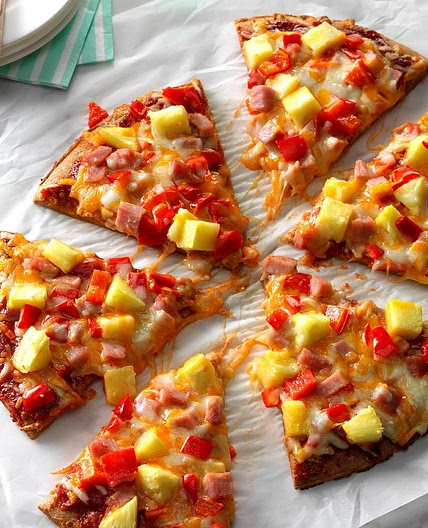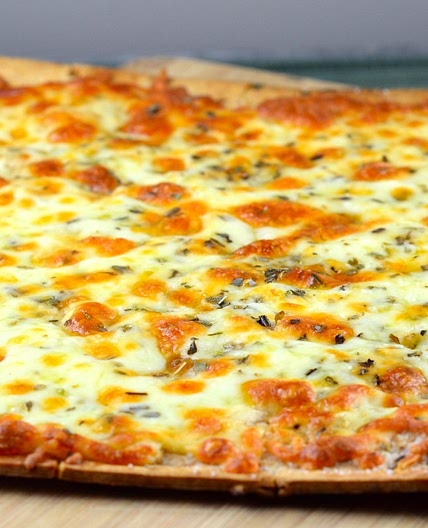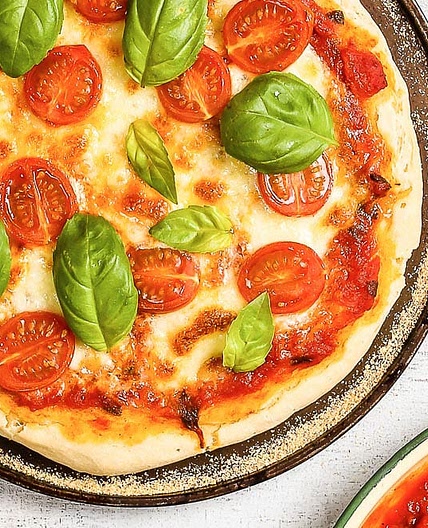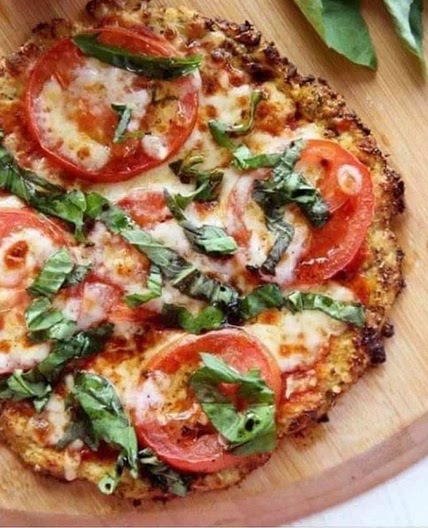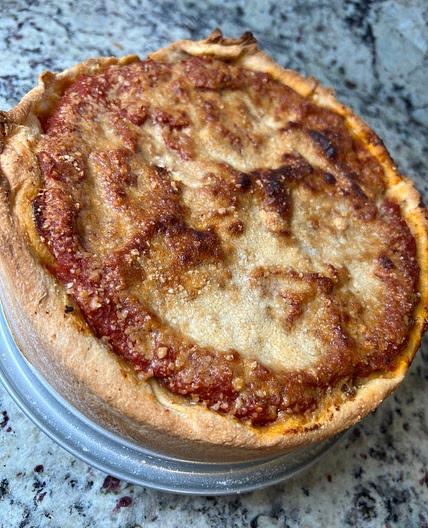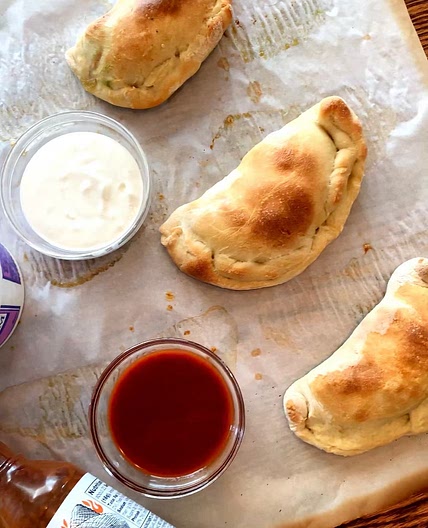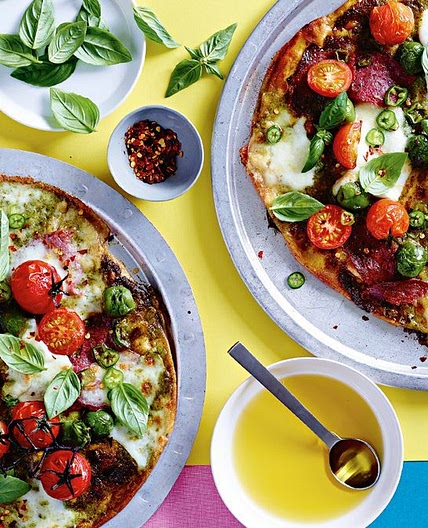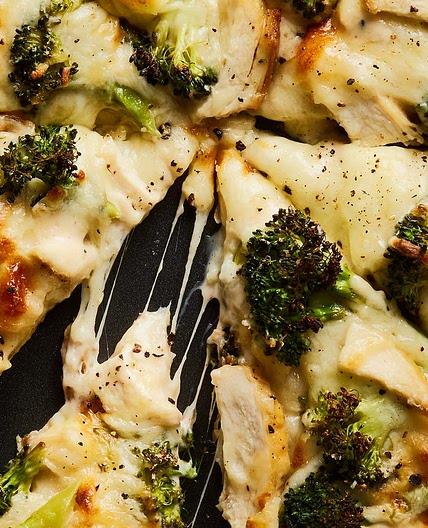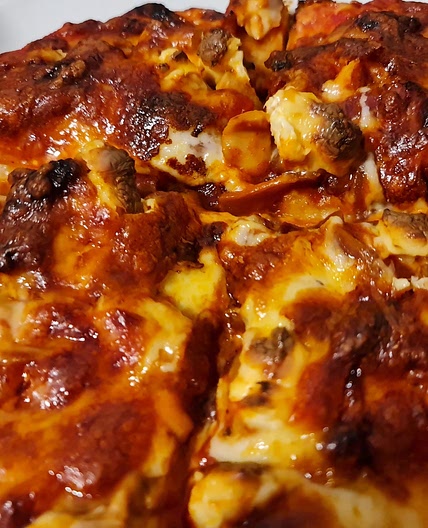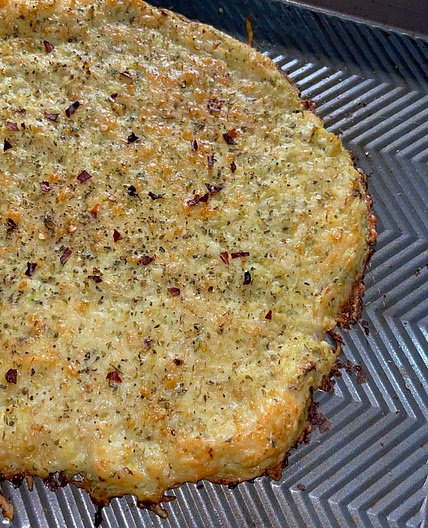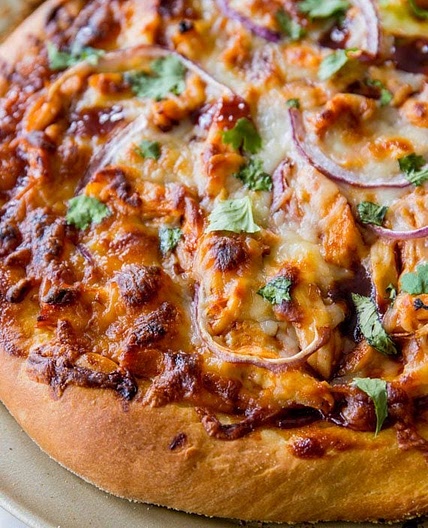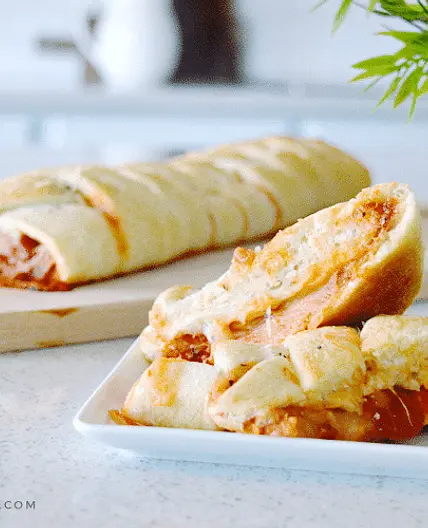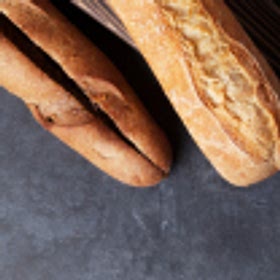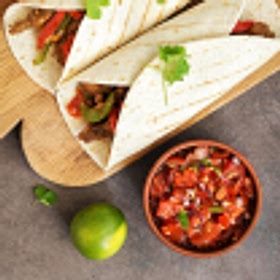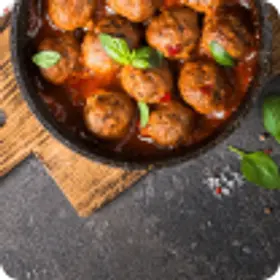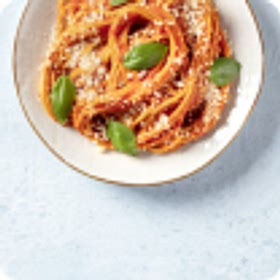Pizza Recipes for Home. Plus, Nutritional Information – Samsung Food
Pizza is a dish beloved by people all over the world, and for good reason. It combines fresh ingredients with a crispy crust, mouth-watering cheese, and a variety of flavorful toppings to create a meal that's hard to beat. In this article, we'll delve deeper into the fascinating history of pizza, explore its many varieties, and provide you with valuable tips and tricks for perfecting your own homemade pies. Whether you're a die-hard fan of the classic Margherita or enjoy experimenting with new toppings and sauces, there's something for everyone in the world of pizza.
Nutrition per serving size(483g)
- Energy: 196.9
- Total Fat: 11.54
- Saturated Fat: 4.17
- Carbohydrate Total: 13.51
- Sugars: 2.9
- Protein: 9.7
- Sodium: 371.76
- Fiber: 1.11
- Trans Fat: 0.01
- Monounsaturated Fat: 3.47
- Polyunsaturated Fat: 1.57
- Cholesterol: 20.36
- Calcium: 272.08
- Magnesium: 9.48
- Potassium: 80.99
- Iron: 0.49
- Zinc: 0.57
- Phosphorus: 89.88
- Vitamin A: 234.23
- Vitamin C: 8.63
- Thiamin B1: 0.02
- Riboflavin B2: 0.07
- Niacin B3: 0.35
- Vitamin B6: 0.02
- Folic Acid B9: 7.1
- Vitamin B12: 0.15
- Vitamin D: 0.05
- Vitamin E: 0.95
- Vitamin K: 14.73
- Tryptophan: 55.86
- Alpha Carotene: 5.19
- Beta Carotene: 81.62
- Omega 3 DHA: 0
- Omega 3 EPA: 0
Like many other iconic dishes, pizza has humble origins as a simple and inexpensive meal for working-class families in Naples, Italy. The earliest form of pizza recipe was known as “pizza alla marinara,” a flatbread topped with tomato sauce, garlic, and oregano. It was a quick and affordable option for those who couldn’t afford much more.
Over time, pizza began to evolve as other ingredients such as cheese, sausage, and fresh herbs were added. By the late 1800s, the Margherita pizza had become a staple in Naples and was named after Queen Margherita of Savoy, who was said to have been enamored with the dish’s colors of red, white, and green – representing the Italian flag.
Nutritional Value of Pizza
While pizza is undeniably delicious, it’s important to consider its nutritional value. The specific nutritional content of pizza can vary depending on the crust, toppings, and portion size. Generally, pizza provides a good source of carbohydrates from the crust. Carbohydrates are necessary to supply energy for our bodies. The cheese on pizza contributes calcium and protein, essential for building strong bones and muscles.
However, it’s worth noting that pizza can also be high in saturated fat and sodium. That’s especially true if it’s loaded with fatty meats and excessive amounts of cheese. To make a more balanced choice, opt for thin-crust pizzas and choose lean protein options like grilled chicken or vegetables as toppings. Adding a variety of colorful veggies can increase the fiber, vitamins, and minerals in your pizza. Moderation is key, so enjoy pizza as part of a balanced diet, savoring its flavors while being mindful of portion sizes and the overall nutritional composition.
Modern Varieties of Pizza

Today, pizza recipes come in countless varieties. Thin base, thick base, loaded with cheese sauce or sprinkled with mozzarella. Some don’t even have a tomato base! Each of the pizza recipes and varieties have their own unique characteristics and regional influences. Let’s explore some of the most popular types:
- Neapolitan Pizza: Neapolitan pizza has a thin, soft, and chewy crust. It’s traditionally cooked in a wood-fired oven. Then, you top it with San Marzano tomatoes, mozzarella di bufala, fresh basil, and extra-virgin olive oil. The simplicity of the ingredients allows the flavors to shine through, so you get a delicious and authentic pizza experience.
- New York-style Pizza: New York-style pizza recipes feature a thin and foldable crust. It’s characterized by a light layer of tomato sauce, generous toppings, and a perfect balance of cheese and toppings. It’s typically sold in large, wide slices and is renowned for its delicious simplicity and classic flavor combinations.
- Chicago-style Pizza: Chicago-style pizza is famous for its deep-dish, buttery crust that rises high on the sides of a deep pan. It’s half pie, half pizza! It’s loaded with tangy tomato sauce, cheese, and a variety of meats and vegetables. The toppings are often layered, with the sauce on top, creating a hearty and indulgent pizza experience.
- Sicilian Pizza: Sicilian pizza recipes have a thick, spongy crust. This type of pizza is usually square or rectangular in shape. It features a generous amount of tomato sauce, cheese, and toppings. The crust is soft and doughy on the inside, with a crispy bottom, providing a delightful contrast of textures.
- California-style Pizza: California-style pizza is known for its innovative and creative toppings. It often features unconventional ingredients such as avocado, goat cheese, arugula, and sun-dried tomatoes. The crust can vary from thin to medium thickness. And the combinations of flavors? Those are only limited by imagination!
Tips and Tricks for Perfecting Pizza Recipes
Now that you’re familiar with the various types of pizza, let’s explore some tips and tricks for creating your own delicious homemade versions. You can totally make pizza at home! But, you do need to take a few steps to make sure you nail that base and topping.

6 Steps to the Perfect Pizza
- Start with high-quality ingredients: Whether you’re making your own dough or buying pre-made, it’s essential to use fresh and flavorful ingredients. Opt for San Marzano tomatoes, which have a sweet flavor and low acidity, and choose fresh mozzarella for its creamy texture.
- Experiment with toppings: While classic toppings like pepperoni and mushrooms are always popular, don’t be afraid to try something new and exciting. Consider adding pesto, caramelized onions, roasted vegetables, or even fruits like pineapple for a unique twist.
- Invest in a good pizza stone or baking steel: A high-quality pizza stone or baking steel can make a significant difference in the final result. These tools help distribute heat evenly, resulting in a crispy crust. Preheat the stone or steel in the oven before baking your pizza.
- Preheat your oven to the right temperature: A hot oven is crucial for achieving a perfect pizza. Preheat your oven to at least 475 degrees Fahrenheit (245 degrees Celsius) or higher. This high temperature helps cook the pizza quickly and creates a crispy crust.
- Let your dough rest: Allow your pizza dough to rest for at least 30 minutes after kneading and before stretching and topping it. This resting period allows the gluten in the dough to relax, resulting in a more tender and pliable crust.
- Consider different cooking methods: While most home ovens work well for pizza-making, you can explore alternative cooking methods for unique results. If you have a grill, try grilling your pizza for a charred and smoky flavor. Alternatively, using a pizza oven or a pizza stone in your oven can yield professional-quality results.
Most Popular Pizza Toppings
When it comes to pizza toppings, the options are endless. Whether you’re a meat eater, vegetarian, or a lover of all things spicy, there’s something for you.

If you’re looking for inspiration, here are some pizza toppings which everyone loves:
Meaty Toppings
- Pepperoni: A classic favorite, pepperoni is a spicy and savory cured sausage made from pork or beef. Its slightly greasy texture and bold flavor make it a go-to topping for pizza lovers everywhere.
- Mushrooms: Whether it’s button mushrooms, cremini, or portobello, mushrooms add an earthy and rich taste to pizza. They pair well with other toppings and provide a satisfying chewiness.
- Sausage: Crumbled or sliced, sausage brings a burst of savory goodness to any pizza. From mild Italian sausage to spicy chorizo, this meaty topping adds depth and a touch of indulgence.
- Bacon: Crispy and salty, bacon is a popular choice for meat lovers. Why wouldn’t it be? The smoky flavor adds a savory and salty punch to any pizza.
Vegetarian Toppings
- Bell Peppers: Vibrant and crunchy, bell peppers come in various colors, including green, red, and yellow. They provide a refreshing and slightly sweet flavor that complements the cheese and sauce perfectly.
- Onions: Whether you prefer them caramelized or raw, onions add a distinct and pungent flavor to pizza. Slice them thin for a subtle taste or dice them for a bolder presence.
- Olives: Black or green, olives offer a briny and tangy kick to pizza. They bring a Mediterranean touch and a burst of saltiness that pairs well with other ingredients.
- Fresh Basil: Fragrant and aromatic, fresh basil leaves are a common topping in Neapolitan-style pizza. They infuse the pizza with a delightful herbal flavor and provide a pop of green color.
- Pineapple: These controversial topping sparks passionate debates among pizza enthusiasts. Pineapple lends a sweet and juicy taste to pizza, creating a unique blend of flavors when paired with ham or bacon.
- Fresh Tomatoes: Sliced or diced, fresh tomatoes bring a burst of juiciness and acidity to the pizza. They enhance the overall freshness of the toppings and provide a bright and tangy flavor.
Remember, pizza toppings (just like pizza recipes) are highly customizable. So you can mix and match to create your own delicious combinations. Don’t mind what anyone else thinks! Whether you prefer a classic pepperoni or enjoy experimenting with unconventional toppings, pizza is all about personal taste and enjoyment!
Pineapple on pizza? We won’t weigh in, but know that people will have strong opinions about this one!
FAQs about Pizza and Recipes
Making pizza is fun and delicious! Start by preparing the dough using flour, water, yeast, salt, and olive oil. Let it rise for a bit, then roll it out into a round shape. Spread your favorite sauce, like marinara or pesto, on the dough. Add your favorite toppings, such as cheese, pepperoni, veggies, or even pineapple (if you like it!). Pop it in a hot oven for around 10-15 minutes, and voila! Homemade pizza ready to enjoy!
The best pizza sauce is often simple yet flavorful. To make a basic sauce, combine canned crushed tomatoes, minced garlic, dried oregano, salt, pepper, and a drizzle of olive oil. Mix well and let the flavors meld for a few minutes. For a zesty twist, you can also add a pinch of red pepper flakes. Remember, you can always customize the sauce to your liking by adding herbs, spices, or even a touch of honey for sweetness.
The best pizza toppings depend on your personal preferences. Popular options include cheese (like mozzarella), pepperoni, sausage, mushrooms, onions, bell peppers, and olives. If you like a bit of heat, jalapeños or hot peppers can add a kick. Don’t forget fresh herbs like basil or oregano for added flavor. In the end, the best toppings are the ones you love!
Reheating pizza is easy! You can use a microwave or an oven. If using a microwave, place a slice on a microwave-safe plate and heat it for about 30 seconds to a minute, depending on your microwave’s power. For a crispier crust, use an oven. Preheat it to around 350°F (175°C), place the pizza directly on the oven rack or a baking sheet, and heat for about 5-10 minutes until it’s hot and crispy. Enjoy your reheated pizza!
Pizza Recipe Recap
Pizza may have humble roots, but it has become one of the world’s most beloved dishes, with countless variations to suit every taste. So next time you’re in the mood for a slice, try making your own at home.
Remember, with the right ingredients, techniques, and a sense of culinary adventure, you can create a pizza masterpiece that rivals those from the best pizzerias.

